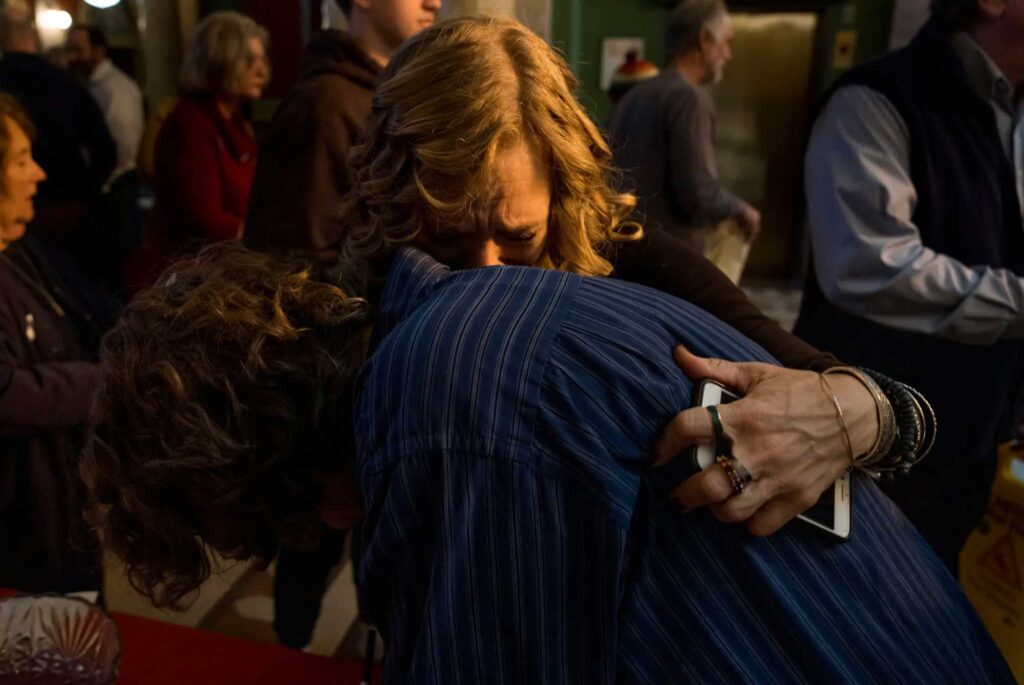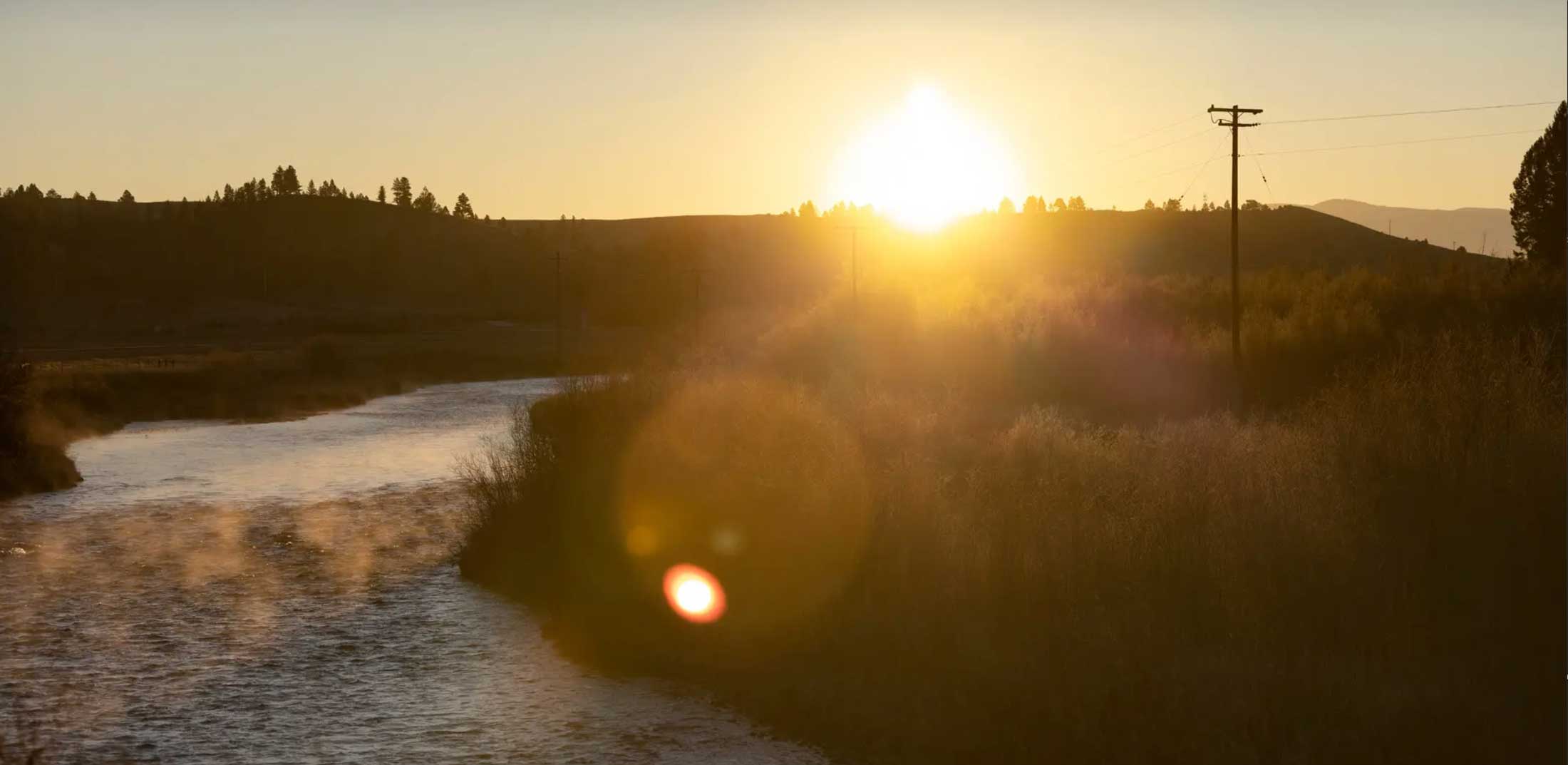Montana’s suicide rate has been the highest in the U.S. for the past three years. Most of the deaths involved firearms.
But suicide rarely registers in the national debate over guns.
{In Montana, a state of 1.1 million people, 955 people died by suicide from January 2021 through November 2023.}
By Michael Corkery
Photographs by Tailyr Irvine
Reporting from Helena, Montana
Published June 10, 2024, Updated June 14, 2024 (New York Times)

On a typical day, Ali Mullen races from her job at the county health department in Helena, Mont., to pick up dinner for her three children, heads home to feed them and then goes back out for a violin lesson or a school play, crisscrossing the small city in her aging S.U.V., with a rainbow bumper sticker that reads “You Are Loved.”
A big pack of gummy bears keeps her going, stashed in her handbag next to a different sort of lifesaver: a gun lock that she carries almost everywhere she goes.
In a sparsely populated state where many people own firearms, the small metal contraptions, which fit around a trigger and cost less than $10 on Amazon, are one way Montanans are trying to reduce the high rate of people who kill themselves.
For the past year, Ali, 46, has been giving gun locks away to anyone who wants one, her piece of trying to solve the puzzle of suicide in Montana. “It’s in the culture,” she said one afternoon in Helena. “If you don’t know someone, you know of someone who has died.”
Murder rates and mass shootings make national headlines, defining the discussion over pervasive gun violence. But most gun deaths in America are self-inflicted. There were about 27,000 gun suicides in 2022. That was a record, and far higher than the 19,500 gun homicides documented that year.
There have been more gun suicides than gun homicides in the United States every year for the past 25 years. Yet the harm inflicted on communities by suicides rarely registers in the national debate over guns.
Over the past three years, Montana’s typically elevated suicide rate was the highest in the nation, according to an analysis of federal mortality data by The New York Times. In a state of 1.1 million people, 955 people died by suicide from January 2021 through November 2023. Other states in the Mountain West, including Wyoming and New Mexico, have also struggled with high suicide rates and face many of the same challenges as Montana.
Last year, suicides in Montana and the nation declined to near pre-pandemic levels. But the rate of suicides in Montana remained one of the worst in the country, and a source of widespread grief across the state.
Many of these deaths are felt but not seen. Suicide, despite its frequency, can still be steeped in secrecy and shame. The deaths often come after a struggle with mental health issues or substance abuse.
Suicidal impulses can last only briefly, but easy access to a gun makes the urges more difficult to survive. In Montana, 67 percent of suicides in 2022 involved a gun, according to the Times analysis. Nationally, guns were used in about 55 percent of such deaths.
But in a place where guns are embedded in the rugged, frontier ethos, there is little political will to prevent people who are at risk of harming themselves from owning a gun. A proposal to create a “red flag” law, which would prohibit a person determined to be a danger to himself or others from possessing a firearm, died in a committee of the State Legislature last year.
Several years ago, Ali’s husband’s family passed down some firearms that were considered heirlooms, and she agreed they could be stored at her house.
At the time, suicide did not cross her mind.
***
The first time Ali drove through Montana, she was in college on a road trip in the late 1990s. She remembers how the clouds cast giant shadows on the open plains, revealing the state’s “Big Sky.”
She was hooked.
She transferred to the University of Montana from a college in Illinois. After graduation, she worked as a 911 dispatcher in Glacier National Park, fielding calls for “bear-jams,” when traffic would stop because a grizzly wandered out into the middle of the road.
John Mullen was working as a handyman at what is now the Whitefish Mountain Resort when they met.
They married in Glacier. A pair of bald eagles circled overhead as they exchanged their vows. “It’s the greatest place on earth,” she said of Glacier.
After their first child, a daughter, was born in 2006, they moved to the Helena area to be closer to John’s parents.
The vice president of a community bank took a liking to John and hired him as mortgage loan officer. He was a natural, tapping his connections across greater Helena where he had lived since he was a boy.
Montana is a vast state. Yet, somehow, Ali said, it could feel intimate.
“Montana is a string of small towns connected by one or two highways,” she said. “We all know each other.”
But that closeness can also amplify the fallout from suicides.
Research has shown that 135 people can be “exposed” to a single suicide and that some of those closest to the person who dies can be at greater risk of contemplating suicide themselves.
“There is a lot of strength in a small-town structure, but the downside is that if you lose one person to suicide, it can have a large impact on the community,” said Janet Lindow, chief executive of the Rural Behavioral Health Institute in Livingston, Mont., which screens children for suicide risk and connects them with mental health care.
Researchers say numerous issues contribute to Montana’s suicide problem. A report by the state’s suicide prevention coordinator points to a combination of factors, including access to firearms, the isolation of rural living and the relatively large number of veterans and Native Americans in Montana, groups that have had higher rates of suicides.
The Rev. Keith Johnson, the pastor of the Life Covenant Church in Helena and a friend of Ali’s, used to avoid talking openly with congregants about suicide.
But faced with such regular deaths in the community, he now talks about the issue with middle school and high school students at his church, which is not far from the State Capitol building and blocks of Victorian homes, some dating back to Helena’s boom during the gold rush.
***
If you are having thoughts of suicide, call or text 988 to reach the 988 Suicide and Crisis Lifeline or go to SpeakingOfSuicide.com/resources for a list of additional resources. Go here for resources outside the United States.



